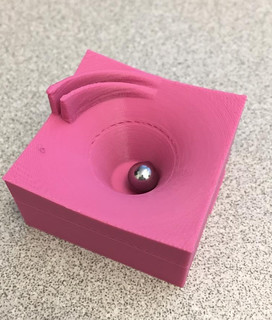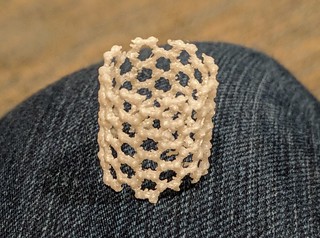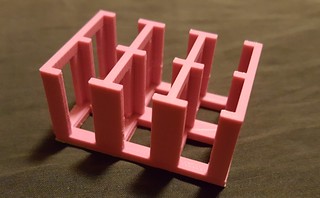
Gravitational potential well
For the last 3 years, Professor Deanna Donohoue has included 3D printers with her instrumental analysis chemistry course. In addition to 3D printers, students use other innovative tools such as Arduinos. For the 3D printing portion, students receive training and access to the space and are instructed to print a chemistry-related object from the Journal of Chemical Education, the NIH 3D print exchange, or a general 3D object repository like Thingiverse.
After completing a print, students answer the following questions:
- How can we use 3D printers with other instruments or instrument development?
- Draw a black box model of the 3D printer. Include the computer and steps involved on the computer.
- Find an application of 3D printing that you think is interesting.
- Find a scientific publication which uses an instrument made with a 3D printer, or has parts from a 3D printer.
The students are encouraged to think of the printers as they would any other laboratory tool or equipment. This approach as a scientific instrument gives the students beneficial insight and understanding when it comes to troubleshooting. Professor Donohoue described these printers as exciting tools to allow for citizen science as well as creating inexpensive custom tools that allow for previously cost-prohibitive field work.

Carbon nanotube

Cuvette stand
